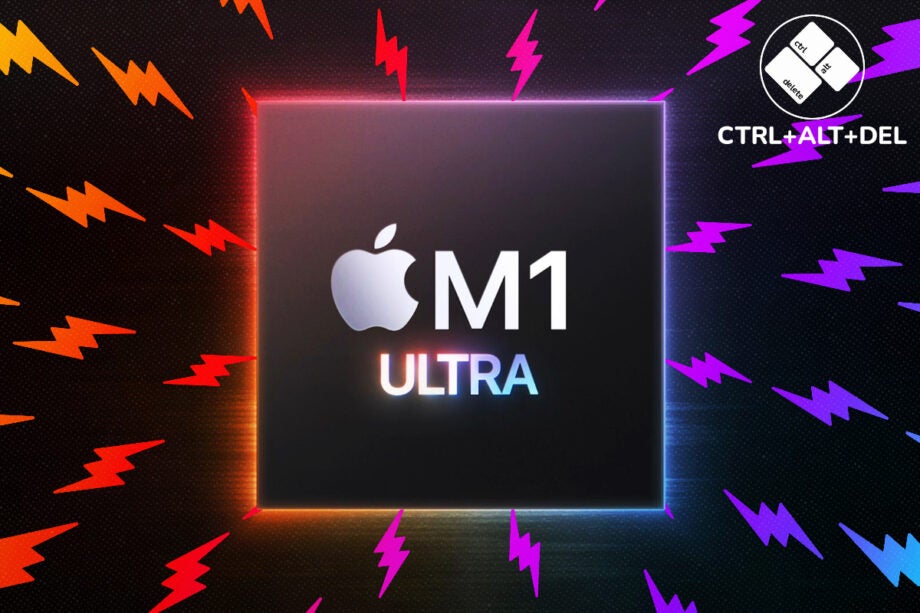Ctrl+Alt+Delete: The Apple M1 Ultra could be usurped sooner than you think

OPINION: Apple rocked the world this week by introducing the M1 Ultra, the most powerful Mac chip yet in the Apple silicon family.
But while Apple has raised the performance ceiling to absurd new heights, the M1 Ultra’s time at the top could well be fleeting. Apple hinted as much when revealing it will have more news about a Mac Pro “another day”, confirming that a new iteration of the desktop PC is still on the cards.
Apple tipster Mark Gurman, who leaked correct information about Apple’s ‘Peek Performance’ event ahead of time, has also suggested (via Bloomberg) that a new Mac Pro could launch “a little later this year”. With the annual WWDC showcase usually taking place in June, it seems the most likely event for the Mac Pro to make an appearance.
Of course, a new Mac Pro doesn’t guarantee a new Apple Silicon chip, as Apple could simply slap the M1 Ultra inside and call it a day. After all, Apple has already confirmed the M1 Ultra is more powerful than a Mac Pro with a 16‑core Intel Xeon CPU and Radeon Pro W5700X.
But all signs point towards Apple launching an even more powerful chip than the M1 Ultra. Back in October 2021, Mark Gurman tweeted that Apple is working on a chip for the Mac Pro that will pack a whopping 40 CPU cores and 128 GPU cores.
It’s possible that Gurman received false information, as not every Apple leaker is 100% accurate, but Apple’s new UltraFusion technology makes this claim even more credible.
UltraFusion is a new packaging architecture that allows Apple to fuse together the die of two chips in order to scale up the specs and performance. With that in mind, the M1 Ultra is essentially just two M1 Max chips fused together.
This becomes more obvious if you check the specs. The M1 Max features 10 CPU cores, 24 GPU cores and 16 Neural Engine cores, while the M1 Ultra packs 20 CPU cores, 48 GPU cores and 32 Neural Engine cores. You don’t need to be a mathematician to see that Apple has doubled the core counts.
But what’s stopping Apple from scaling up the power of its Apple M1 Max chip even further? Imagine fusing four chips together instead of just the two. It sounds absurd on paper, but it may yet be possible.
If you remember, the rumoured Mac Pro chip features 40 CPU cores, which is four times as many cores as the M1 Pro and double the count of the M1 Max. Making use of its UltraFusion technology once again would make a lot of sense for Apple, as it would mean it could simply scale up its existing chip rather than start from scratch. This also explains how Apple was able to launch the M1 Ultra so soon after the M1 Pro and M1 Max chips, despite its ground-breaking performance.

And even if this theory turns out to be wrong, the Mac Pro still seems destined for a new chip. It wouldn’t make much sense for a new Mac Pro to offer the same power as a Mac Studio, which is essentially just a chunky Mac Mini. The Mac Pro is a full-sized desktop computer, offering plenty more space for a larger chip and more sophisticated cooling solutions.
The Mac Pro may well offer the M1 Ultra as the base option, but I’m convinced Apple has an even more powerful chip up its sleeve for the high-tier configurations. The Mac Pro has historically been Apple’s most powerful computer, and I don’t see that changing just because Apple is ditching Intel processors.
And with the Mac Pro the last Mac to get an Apple Silicon upgrade (other than the high-end Mac Mini configuration), this new chip could well end up being the swansong of the M1 generation. Until then, we’re yet to see the peak of Apple’s powers, despite the frightening power that the M1 Ultra has to offer.
Ctrl+Alt+Delete is our weekly computing-focussed opinion column where we delve deeper into the world of computers, laptops, components, peripherals and more. Find it on Trusted Reviews every Saturday afternoon.








